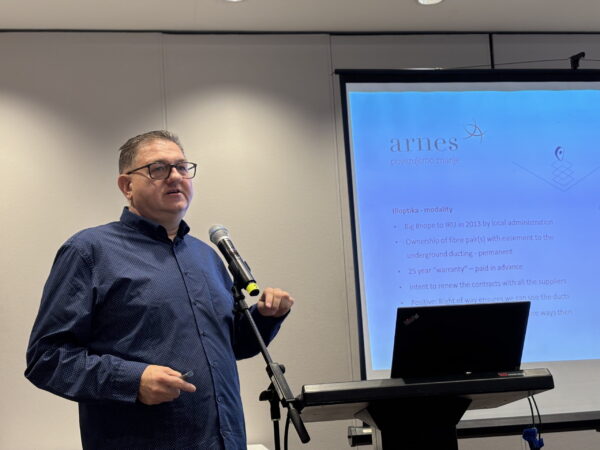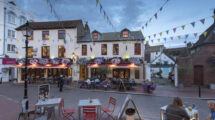39 on-site and 20 remote participants attended the 21st Special Interest Group on Network Operations Centres (SIG-NOC) meeting on 13-14 November in Berlin, kindly hosted by DFN. The two-day event covered topics such as RPKI, use cases and tools to enhance network visibility, routing security, and challenges encountered in NOC troubleshooting.
The first day commenced with a welcome from Robert Stoy (DFN) and an introduction to the newest SIG-NOC Steering Committee member – Jože Hanc (ARNES). With a proactive attitude and a fresh perspective, Jože will be a great addition to the committee.

Arturo Servin, Interconnect and Edge Planning Technical Program Manager at Google and member of the MANRS Steering Committee, kicked off the meeting with a talk on routing security challenges and gave an update on MANRS (Mutually Agreed Norms for Routing Security) – a 10-year old framework improving routing security and serving as an essential part of supply chain security.
Alastair Strachan (RIPE NCC) then gave an RPKI (Resource Public Key Infrastructure) 101 presentation. He discussed what RPKI is and its usage as a security framework that helps network operators make more informed and secure routing decisions.
The meeting continued with a presentation from João Silva (FCCN) on increasing network visibility. He showcased the advancements in network visibility achieved within the FCT|FCCN L2/L3 network over the past two years, following the RCTS100 project. This project not only upgraded the network to Nx100G connections but also introduced a complete technological shift in network management. Later, Temoor Khan (GÉANT) gave a short EuroHPC update on current operations, administration, and future developments. EuroHPC enables European countries to coordinate their supercomputing strategies and investments together with the EU.

After a short coffee break, the meeting continued with a special talk from Peter Szegedi from the European Commission, and formerly a core member of SIG-NOC in past years. Peter discussed the EOSC (European Open Science Cloud) EU Node, its unique features, contractors of the service, operational structure and processes, and different service models.
The first day came to a close with a live demo of DFN’s GIS system and portal from Thomas Schmid (DFN), followed by an overview of Internet2’s routing security from Steve Wallace (Internet2). The day closed with a social dinner in the heart of Berlin, kindly sponsored by RIPE NCC.

The second day started off with a demo from Mirna Ljubić Tustonjić (CARNET) of their use of Grafana for accelerating NOC troubleshooting. She showcased the Grafana dashboard which unifies data from various tools and data sources used for managing operational networks.
Aitor Mendaza Ormaza (BENOCS) followed with presenting use cases for NRENs and the useful insights gained when it comes to network visibility – an essential part for a smooth-running network. Later, four interesting flash talks took place from Will Barber (GÉANT), Leonie Schäfer (DFN), Jože Hanc (ARNES) and Laetitia Delvaux (PSNC).
The day continued with a presentation from Robert Stoy (DFN) on the DFN network X-WiN and its current core network migration from a monitoring perspective, including a live demo. Afterwards, Karel van Klink (GÉANT) gave an overview of the GÉANT Automation platform, what components are involved when automating network services, and how it’s used in an example case of migrating a backbone link.


Jonny Lundin (SUNET) ended with an interactive discussion on how AI is affecting NRENs networks and data centres. In groups, two questions were addressed: how participants are using AI in their NOC and what use cases they would like to have to assist them in their operations. Many useful ideas and perspectives were shared and it seems like it will remain a topic to further be discussed in the future.
The day ended with an evaluation of the meeting’s outcomes, and volunteers were sought for hosting the next SIG-NOC meeting in 2025. A big thank you to all those who joined both in-person and online, and a special thanks to our colleagues at DFN who made all of this possible.







